
20 Animals That Eat Plants (Herbivores) Photo Examples
Hey there, young explorers! Have you ever wondered about the incredible animals that call our planet home? Today, we're going to embark on an exciting journey and learn all about herbivores – the amazing kind of animal that munch on plants for their meals.
Imagine a vast, lush meadow filled with vibrant flowers and tall grasses swaying in the gentle breeze. Now, picture a herd of zebras grazing peacefully, their black and white stripes shimmering in the sunlight. Or perhaps a giant panda munching on a bamboo shoot, its adorable face covered in green leaves. These are just a few examples of the fascinating herbivores that inhabit our world.
But what exactly are herbivores, you might ask? Well, they are animals that eat only plants – from juicy fruits and crunchy leaves to tender grasses and hardy bark. They come in all shapes and sizes, from the towering giraffe with its long neck to the tiny caterpillar inching along a leaf.
What Are Herbivorous Animals?
Herbivores is a scientific name for animals that eat only plants for their food. They are an essential part of the natural world, playing a crucial role in maintaining the balance of ecosystems. These plant-eaters come in all shapes and sizes, from the massive elephants that roam the savannas to the tiny caterpillars that munch on leaves.
Types of Herbivores
There are different types of herbivores, each with its own unique way of obtaining and digesting plant matter. Some of the main types include:
Grazers: Animals like cows, sheep, and horses that feed on grasses and other low-growing vegetation.
Browsers: Creatures such as deer, giraffes, and moose that eat leaves, twigs, and bark from trees and shrubs.
Frugivores: Animals like monkeys, bats, and birds that primarily consume fruits and berries.
Adaptations of Plant-Eating Animals
Herbivores have developed some amazing adaptations to help them survive on a plant-based diet. For example, many have specialized teeth and powerful jaws to chew and grind tough plant material. Some, like cows and sheep, have multiple stomachs to aid in digesting the fibrous plants they consume.
Other adaptations include long necks (like giraffes) to reach high-up leaves, strong claws for stripping bark (like pandas), and specialized digestive systems to break down tough plant matter (like horses and rabbits).
20 Examples of Animals That Eat Plants
Now that we know what herbivores are and how they've adapted to their plant-based foods diets, let's explore some amazing examples of these incredible creatures!
1. Giant Pandas

These adorable black-and-white bears are herbivores that primarily eat bamboo. With their strong jaws, sharp claws, and flat teeth, giant pandas can chew through tough bamboo stems and leaves. They spend most of their day munching on this fibrous plant.
2. Koalas
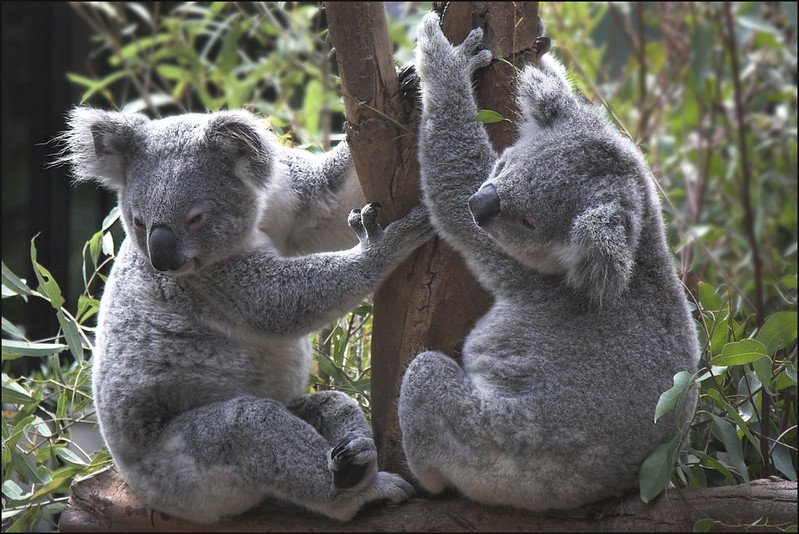
Koalas are herbivorous mammals that live in the eucalyptus forests of Australia. Their food source consists almost entirely of eucalyptus leaves and is a type of plant, which they can digest thanks to their specialized digestive enzymes system. These sleepy marsupials spend up to 20 hours a day resting and eating!
3. Gorillas

These powerful primates are herbivores that live in the forests of Africa. Gorillas eat a variety of plants, including leaves, stems, bark, and fruits as their plant-based diets. Their strong jaws and teeth allow them to chew through tough plant material with ease.
4. Zebras

With their distinctive black-and-white stripes, zebras are herbivores that graze on grasses and other low-growing food type plants in the African savannas. Their tough lips and strong teeth help them tear and chew the tough vegetation.
5. Giraffes
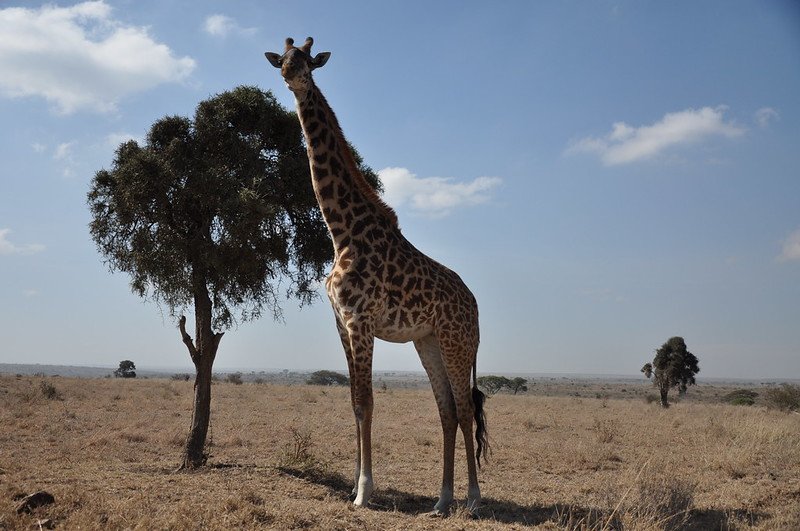
These tall, graceful animals are herbivores that use their long necks to reach the leaves, twigs, and fruits of tall trees. Giraffes have a specialized tongue that helps them strip leaves from branches and thorny bushes.
6. Elephants

As the largest land animals on Earth, elephants are massive animals that consume a wide variety of plants, including grasses, leaves, bark, and fruits that are parts of plants. Their strong trunks help them grasp and tear off vegetation, while their powerful jaws and teeth grind up the tough plant matter.
7. Manatees

These gentle, aquatic mammals are herbivores that feed on aquatic plants like seagrasses and algae. Manatees use their flexible lips to grasp and tear off the plants, which they then grind up with their flat, ridged teeth.
8. Sloths

Sloths are herbivores that live in the tropical forests of Central and South America. They eat a variety of leaves, twigs, and fruits from part of a plant like the trees they call home. Their slow metabolism and specialized digestive system allow them to extract nutrients from these tough plant materials.
9. Iguanas

These lizards are herbivores that live in the warm regions of the Americas. Iguanas primarily eat leaves, flowers, and fruits from various plants. Their sharp teeth and powerful jaws help them tear through tough vegetation.
10. Caterpillars
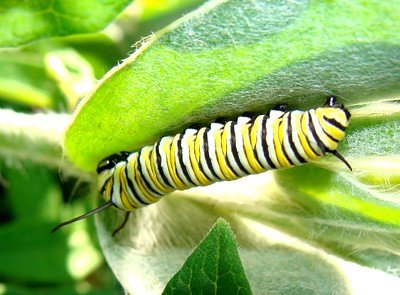
These tiny, crawling creatures are herbivores that feed on leaves and other plant parts. Different species of caterpillars have preferences for specific plants, and they use their strong jaws to chew through the foliage.
11. Grasshoppers
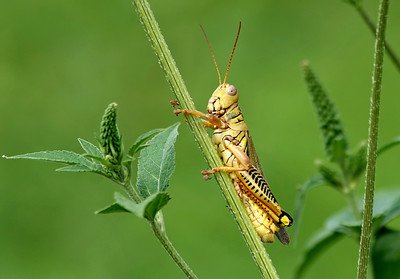
Grasshoppers are herbivores that feed on grasses, leaves, and other vegetation. With their powerful jaws and chewing mouthparts, they can easily munch on tough plant material.
12. Rabbits
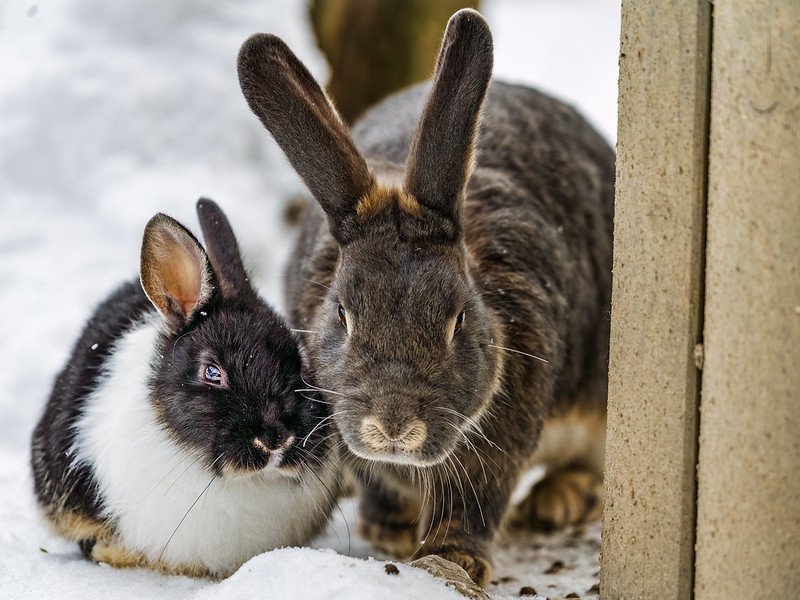
These fluffy, small mammals are herbivores that eat a variety of grasses, leaves, vegetables, and fruits. Rabbits have specialized digestive systems that allow them to extract nutrients from tough plant matter.
13. Deer

Deer are herbivores that live in forests and meadows around the world. They primarily eat leaves, twigs, bark, and grasses. Their sharp teeth and strong jaws help them tear and chew through tough plant material.
14. Moose

These large, antlered animals are herbivores that live in the forests of North America and Europe. Moose feed on a variety of leaves, twigs, and aquatic plants. Their long legs and powerful jaws allow them to reach and consume tough vegetation.
15. Beavers

Beavers are herbivores that live in and around rivers and streams. They primarily eat the bark, leaves, and twigs of trees, using their sharp teeth to gnaw through the tough plant material.
16. Squirrels

These agile, bushy-tailed small animals are herbivores that eat a variety of nuts, seeds, fruits, and fungi. Squirrels have strong jaws and sharp teeth that help them crack open tough nutshells and chew through tough plant matter.
17. Capybaras

Capybaras are the largest rodents in the world and are herbivores that live in South America. They primarily eat grasses, aquatic plants, and fruits. Their strong jaws and teeth help them chew through tough vegetation.
18. Kangaroos
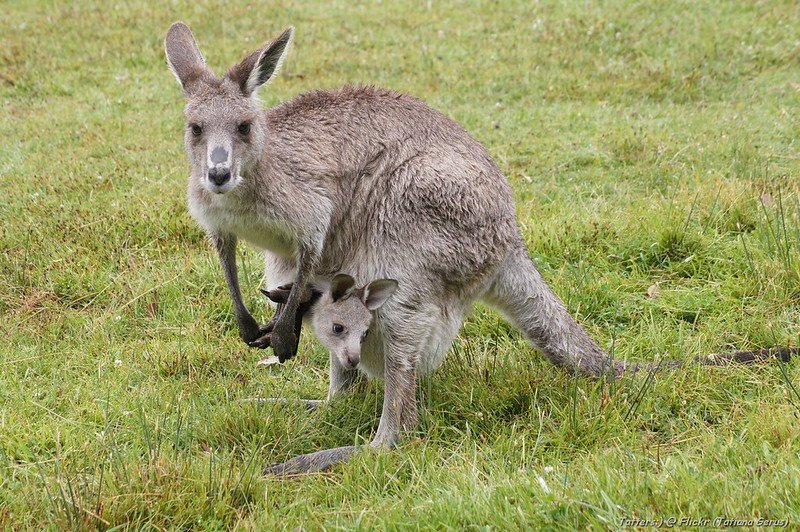
These iconic Australian marsupials are herbivores that graze on a variety of grasses, herbs, and shrubs. Kangaroos have specialized teeth and digestive systems that allow them to extract nutrients from tough plant matter.
19. Tortoises

Tortoises are herbivores that live on land and eat a variety of grasses, leaves, fruits, and vegetables. Their strong jaws and sharp beaks help them tear and chew through tough plant material.
20. Butterflies

While butterflies are small insects as adults, feeding on nectar from flowers, their caterpillar stage is when they truly feast on leaves and other plant parts. Different butterfly species have preferences for specific host plants.
The Importance of Plant-Eating Animals
Herbivores play a vital role in the natural world and food web, and their importance cannot be overstated. These plant-eating animals are essential for maintaining the delicate balance of ecosystems and ensuring the survival of countless other species.
Role in Food Chains and Ecosystems
Herbivores are an essential link in the animal kingdom food chain, serving as a primary consumers of food for many predators like lions, wolves, and birds of prey that are secondary consumers. Without herbivores, these predators would struggle to survive, leading to an imbalance in the ecosystem.
Additionally, herbivores help to maintain the health of plant communities. By grazing on vegetation, they prevent overgrowth and allow new plants to flourish, promoting biodiversity and ensuring a steady supply of food for themselves and other herbivores creating a symbiotic relationship.
Seed Dispersal and Pollination
Many herbivores play a crucial role in seed dispersal and pollination, which are essential processes for the reproduction and survival of plant species. For example, when animals like birds and bats eat fruits, they inadvertently spread the seeds through their droppings, allowing new plants to grow in different areas.
Furthermore, as herbivores move from plant to plant in search of food, they inadvertently transfer pollen between flowers, facilitating pollination and ensuring the successful reproduction of many plant species.
Without the vital contributions of herbivores, the intricate web of life would be disrupted, and countless plant and animal species would face the risk of extinction.
Threats to Herbivorous Animals
Despite their vital roles in ecosystems, many herbivorous animals face serious threats that put their survival at risk. These threats range from human activities to the impacts of climate change, and it's essential that we understand and address them to protect these amazing creatures.
Habitat Loss and Deforestation
One of the most significant threats to herbivores is habitat loss caused by human activities like deforestation, urbanization, and agricultural expansion. As forests and natural habitats are cleared for development, herbivores lose their sources of food and shelter, making it increasingly difficult for them to survive.
For example, the orangutan, a herbivorous primate found in the rainforests of Borneo and Sumatra, has seen its population decline dramatically due to widespread deforestation for palm oil plantations and logging.
Climate Change
The effects of climate change, such as rising temperatures, changing precipitation patterns, and extreme weather events, and harsh environments pose a significant threat to many herbivorous species. These changes can disrupt the delicate balance of ecosystems, causing shifts in the availability and distribution of plant life that herbivores rely on for food.
For instance, polar bears, which primarily eat seals and other marine mammals, are facing challenges due to the melting of sea ice in the Arctic, making it harder for them to hunt and find food.
Endangered and Vulnerable Herbivores
Due to the combined effects of habitat loss, climate change, and other threats, many herbivorous species are now classified as endangered or vulnerable by conservation organizations like the International Union for Conservation of Nature (IUCN).
Some examples of endangered herbivores include the black rhinoceros, the mountain gorilla, and the Javan rhinoceros. These animals face the risk of extinction if urgent conservation efforts are not taken to protect them and their habitats.
It's crucial that we work together to address these threats and ensure the survival of these incredible plant-eating animals, as their loss would have far-reaching consequences for the ecosystems they inhabit.
Our journey through the fascinating world of herbivores has been an incredible adventure, hasn't it? From the gentle giants like elephants and giraffes to the tiny but mighty caterpillars and grasshoppers, we've explored the incredible diversity of these plant-eating animals.
We've learned about their unique adaptations, their vital roles in ecosystems, and the threats they face due to human activities and climate change. But most importantly, we've gained a deeper appreciation for the intricate web of life that connects us all.
As we move forward, it's crucial that we protect and preserve the habitats of these amazing creatures. By doing so, we not only ensure their survival but also safeguard the delicate balance of our planet's ecosystems, which we all depend on.
So, let's continue to learn, explore, and appreciate the wonders of nature, and let's work together to create a world where herbivores and all living beings can thrive for generations to come.
FAQs
What do herbivores eat?
Herbivores are animals that eat only plants for their food. This includes a wide variety of plant matter, such as leaves, stems, bark, fruits, seeds, grasses, and flowers. Different herbivores have adapted to eat specific types of plants based on their habitat and dietary preferences.
How do plant-eating animals digest their food?
Herbivores have developed special adaptations to help them digest the tough and fibrous plant material they consume. Many have specialized teeth and powerful jaws to chew and grind up plants. Some, like cows and sheep, have multiple stomachs to aid in breaking down the plant matter. Others, like horses and rabbits, have specialized digestive systems that allow them to extract nutrients from plants efficiently.
Why are herbivores important to the environment?
Herbivores play a vital role in maintaining the balance of ecosystems. They are an essential part of the food chain, providing food for many predators. Additionally, by grazing on plants, they help to control overgrowth and promote biodiversity in plant communities.
Herbivores also contribute to seed dispersal and pollination, which are crucial processes for the reproduction and survival of plant species. Without herbivores, the intricate web of life would be disrupted, and countless plant and animal species would face the risk of extinction.
